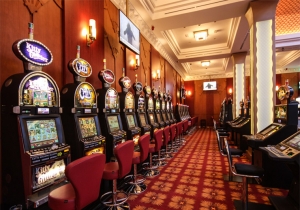
Casino games have long captivated people’s attention, drawing gamblers into a universe filled with fortune, strategy, and the allure of adventure. Each activity is carefully crafted not just for fun, but also to evoke targeted emotional responses that keep players immersed and invested. Understanding the motivations behind these designs reveals much about how psychology plays a crucial role in the gaming experience.
From the vivid lights and vibrant sounds to the complex layering of guidelines and payoffs, casino games are designed to create an atmosphere of thrill and eagerness. Game designers leverage psychological principles to influence player behavior, whether through the use of big prizes, near-miss scenarios, or social connections. By examining these factors, we can better appreciate how casino games fulfill not just a desire for entertainment, but deeper psychological needs for adventure and risk.
Understanding Player Actions
Casino games are engineered with a profound grasp of gamer psychology, which is crucial for drawing in and holding players. The excitement of the game, alongside the hope of winning, establishes a powerful allure. Game designers employ elements like sonic elements, dynamic graphics, and immersive gameplay to capture attention and generate emotional responses. These sensory elements enhance the total environment, making players feel more involved in the game.
Another important aspect of player behavior is the notion of risk and reward. Casino games often weigh high-stakes situations with the potential for substantial rewards, which can result in the event known as near-miss experience. When players come within reach to winning, the brain secretes dopamine, reinforcing their behavior and prompting them to continue playing in quest of that elusive win. This cycle of wish and disappointment plays a critical role in how games are structured and marketed.
Lastly, social factors also play a critical role in player behavior at casinos. Many games are made to be played in groups or in company with other players, fostering a sense of community and shared experience. The community engagement inherent in games like poker enhances enjoyment and can lead to longer play sessions. Designers capitalize on this by crafting environments that encourage players to linger, connect, and come back, making the overall casino experience more appealing.
The Role of Imagery and Audio
Imagery and sound play a significant role in elevating the player’s experience within casino games. Designers utilize bright colors, eye-catching graphics, and engaging animations to capture gambler’s attention and maintain their focus. The use of themes, such as adventure or opulence, helps create an enthralling atmosphere that transports players into another world. By appealing to the senses, these elements contribute to a heightened emotional response, encouraging players to engage more deeply with the games.
Sound design is just as important in enhancing the experience of casino games. The mix of background music, audio effects for successful combinations, and environmental noises creates an auditory landscape that keeps players enthralled. Sounds associated with wins, such as chiming bells or festive music, evoke feelings of excitement and satisfaction, encouraging players to continue playing. These audio cues are carefully placed to amplify the excitement of the game and create a more immersive experience.
Additionally, the alignment of imagery and audio is essential for supporting the game’s overall concept and atmosphere. Each element should coordinate seamlessly to create a unified experience that pulls players in. The effective use of this integration not only improves user satisfaction but also increases the likelihood of return play, as players become more engaged in the captivating world that the gambling games offer. This thoughtful integration of imagery and sound ultimately enhances player involvement and commitment.
Incentive Structures and Participation
The creation of gambling games greatly relies on incentive systems to keep players involved and coming back for more. These structures are based in psychological principles that take advantage of human behavior and desire. Participants are often motivated by the thrill of success, which is supported by immediate feedback through the game structure’s design. This prompt satisfaction not only enhances the gaming experience but also cultivates a sense of achievement, prompting participants to keep playing in hopes of greater rewards.
Gaming establishments implement various reward structures, such as jackpots, bonuses, and increased rewards, to captivate participants. These elements create a layer of thrill that maintains interest. Additionally, the unpredictability of results plays a significant role in sustaining interest. The intermittent reinforcement schedule, where successes are unpredictable but occur often enough, keeps participants on edge and motivated to keep playing. betting sites without GamStop This loop of hope and anticipation is foundational to the success of gambling experiences.
Moreover, community aspects, such as tournaments and multiplayer features, enhance the participation factor by leveraging the desire to compete of participants. The communal aspect of playing with fellow participants can intensify the excitement of success and create a community atmosphere within the casino. By integrating these community elements with effective reward systems, gambling experiences don’t just provide entertainment but also nurture a stronger connection among players, reinforcing their commitment to the gaming experience.



